Part of the Henchy Family Gardens series — where stories and seedlings grow together.
|
Part of the Henchy Family Gardens series — where stories and seedlings grow together.
|

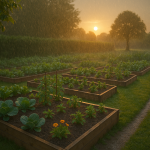
Whether you’re growing in raised beds, rows, or containers, mapping out your garden before planting sets you up for a more abundant, beautiful, and stress-free season.
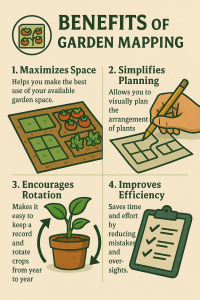
Garden mapping is simply creating a visual layout of your garden space before planting. It can be as simple as a sketch in a notebook or as advanced as a digital plan. A map helps you organize where each crop will grow and allows you to make thoughtful decisions instead of planting on the fly.
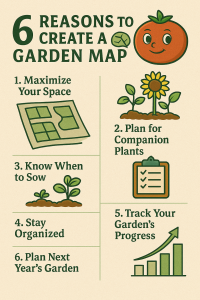 1. Maximizes Space
1. Maximizes SpaceNo more guessing where to put your tomatoes or realizing too late that your cucumbers crowded out your lettuce. Mapping ensures you use every inch efficiently.
Planting the same crop in the same spot year after year can drain the soil and attract pests. A map lets you track what grew where so you can rotate properly, keeping soil healthy and plants strong.
It’s easy to underestimate how large plants will get. A map keeps you from planting too close together, improving airflow and reducing disease.
Tall plants like corn or sunflowers can cast shade on smaller crops. Mapping ensures each plant gets the right amount of light.
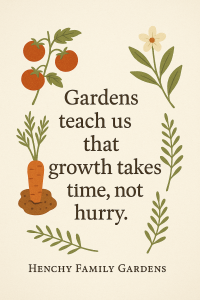
Want to plant spinach in spring, then beans in the same spot later? A map helps you plan out the timing and space for multiple plantings.
Your map becomes a garden diary. Looking back helps you see what worked, what didn’t, and how to improve next season.

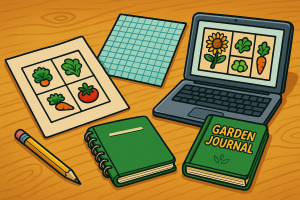
Garden mapping is more than just organization — it’s a way to set yourself up for success, abundance, and peace of mind in the garden.
Think of it as your blueprint for a fruitful season. 🌻
✨ Just like tending your plants, tending your plan brings better harvests.
Share your garden map with us! Tag @henchygardens or visit
HenchyGardens.com 🌿henchyfamilygardens